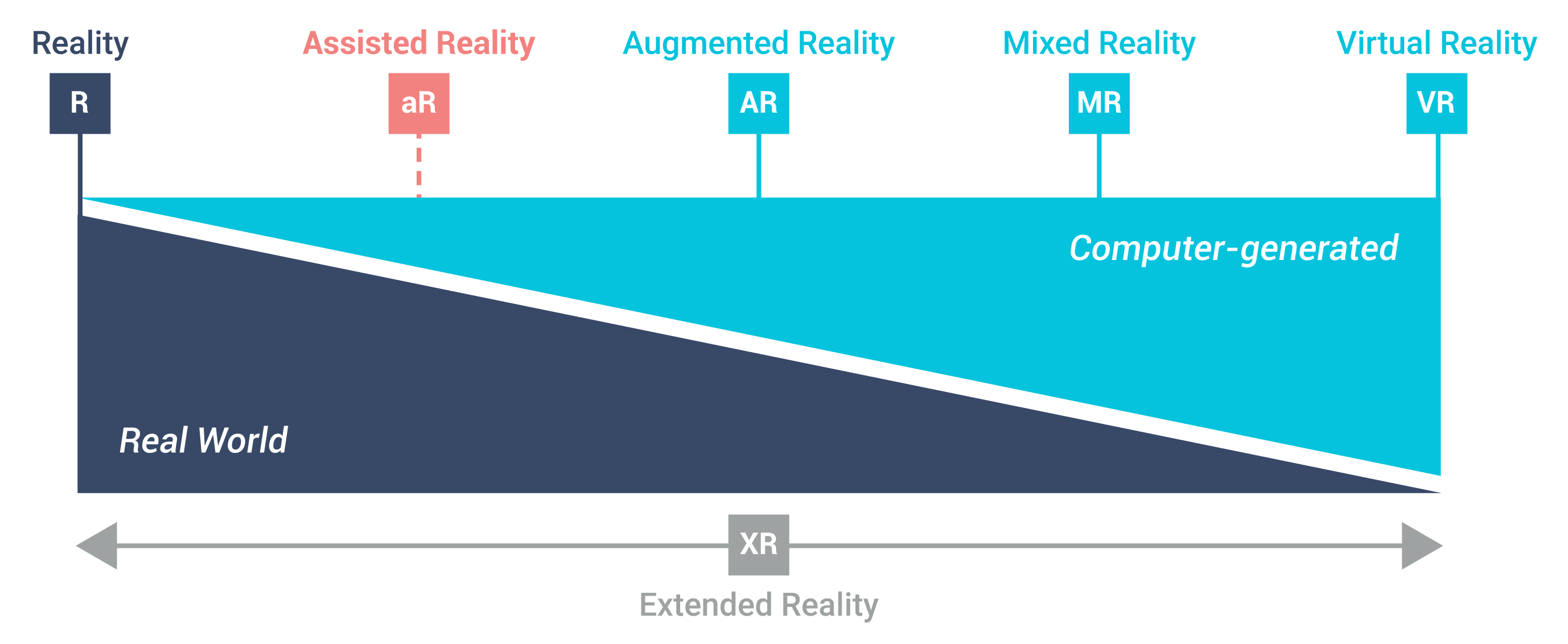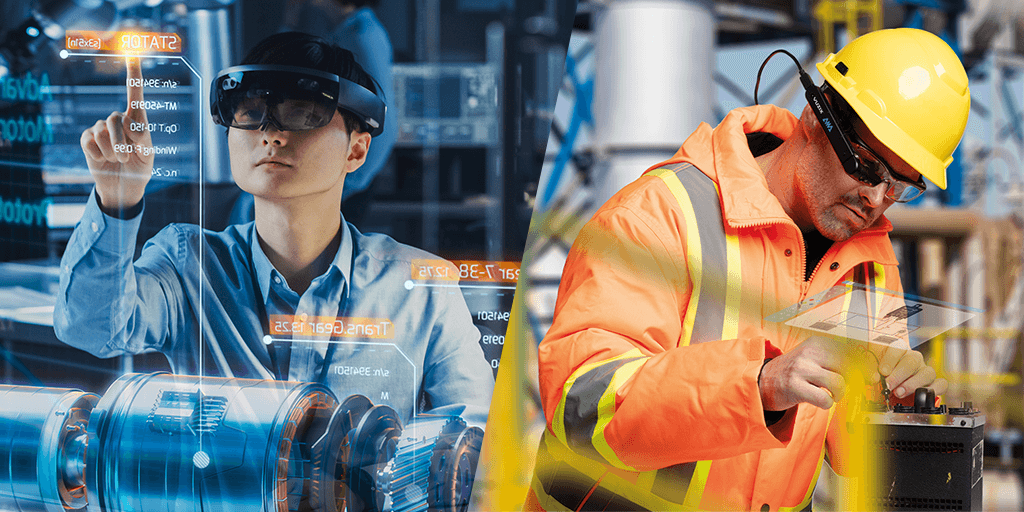1.Difference between XR, VR, MR, AR, and aR
Professionals, looking to digitize their daily operations and implement smart workplace solutions adapted to their field of work, can have a hard time finding their way through the jungle of new technologies. Every day, new products and applications are introduced to the market. The tech terminology itself can be opaque at times, and the difference between Extended Reality (XR), Virtual Reality (VR), Mixed Reality (MR), Augmented Reality (AR), and Assisted Reality (aR) can be quite blurry. Here’s a quick overview of each type of technology, for a better understanding of their benefits for professional applications.

Extended Reality
Extended Reality (XR) is an umbrella term referring to all real and virtual environments generated by computer technology and wearables. It covers virtual, mixed, augmented, and assisted realities.
Assisted Reality
Assisted Reality (aR) is in between AR and “real life”. This technology adds an extra layer of information into the user’s peripheral vision, through a screen within their immediate field of vision, on smart glasses, or a head-mounted device (HMD). This technology can be hands-free, to operate in activities such as repair and maintenance, remote assistance, quality control, or logistics.
Fields of professional application, therefore, cover remote assistance, remote training, quality management, or virtual audit.
Augmented Reality
Augmented reality (AR) is different from VR, in that AR enhances the real world with digital content overlays. AR adds information onto the physical world by superimposing an image, a widget, or computed information on the user’s view, by anchoring digital elements on the real environment (the most notorious examples are Pokémon Go and Snapchat filters).
Fields of professional applications cover retail and logistics, medical, field services, or maintenance.
Mixed Reality
Mixed Reality (MR) is very close to VR and AR. It is the merging of real and virtual worlds to produce new environments and visualizations, where physical and digital objects co-exist and interact in real-time. Mixed reality does not exclusively take place in either the physical or virtual world but is a hybrid of both. Digital objects can be visibly obscured by objects of the real world.
Fields of application for businesses include design, art, education (medical or military training for instance), and more use cases are found in manufacturing, industry, and field services.
Virtual Reality
Virtual reality (VR) refers to a computer-generated simulation in which a person can interact within an artificial three-dimensional environment, using electronic devices, such as specific goggles with an integrated screen, gloves fitted with sensors, or haptic devices.
Examples of professional applications are immersive experiences for entertainment (videogames), training (medical, aircraft piloting), or trade shows.
It is important to note that these definitions are not set in stone: they are influenced by tech trends, and by the market. They are bound to evolve alongside the technologies themselves.
2. What are the pros and the cons of VR, MR, AR, and aR for professionals?
Each type of technology presents advantages and drawbacks. These can be listed as follows:
✅ Context-based, the user is not cut from reality
✅ Real-time information sharing
✅ Simplifies complex processes and instructions
✅ Hands-free operations |
❌Require a minimum of bandwidth (> 3G)
❌Requires quite recent devices (smartphones or HMD) |
✅ Enhances the experience
✅ Easy to use and engaging
✅ Proven and improved technology |
❌ Requires recent, powerful, up-to-date devices (smartphones or HMD)
❌ Need to define consistent data to be useful
❌ Not comfortable using a smartphone
❌ High battery consumption |
✅ Both physical and digital objects co-exist, the user is not cut from reality
✅ Interactive, MR allows to absorb and retain more information
✅ Real-time information and knowledge sharing with collaborators over long distances |
❌ Very high cost of development
❌ Additional fees for equipment
❌ Not easy to master, as the interaction of virtual and real elements depends on the light environment
❌ the learning curve can be disappointing for everyday use of this technology |
✅Safe learning and experimenting environment for collaborators and customers
✅ Exciting and engaging
✅ Realistic technical skills practice
✅ Allows collecting key training metrics |
❌ Cannot be used anywhere. Require a specific space to keep the user in security
❌ High costs of development
❌ Physical side effects (motion sickness etc.) |

